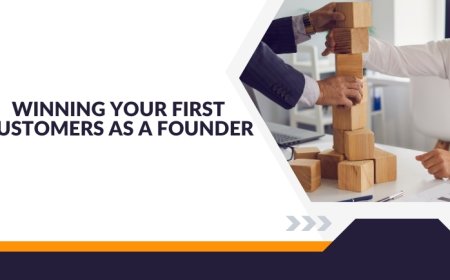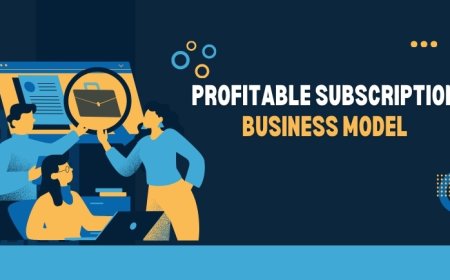How to Build a Lean Startup: A Step-by-Step Guide
Learn how to build a lean startup from scratch in 2025 with this step-by-step guide focused on speed and savings.

Building a lean startup is probably one of the smartest ways right now to cut down on wasting time and money, while learning fast and building something that might actually work in 2025. This way of doing things is all about starting small, trying your ideas early, and tweaking stuff as you go, all while keeping your costs on the low side. Whether you are thinking about a tech company, some online service, or even an e-commerce thing, sticking to lean methods can really help your chances of actually making it.
How to build a lean startup in 2025.
Step 1 - Start with a Clear Problem to Solve
Every lean startup that works usually kicks off with a real problem that people are dealing with. So first, you need to figure out who your people are and what kind of troubles they are having. Do not get too caught up thinking about products or services right away. Instead, look at the problem first. That is how you make sure what you build actually matters to someone out there.
The thing to do here is to go out and talk to people. Do some surveys, have real conversations, poke around, and see what issues keep popping up. If you can find a problem that nobody has really solved properly yet, you might be on to something. Try to offer a fix that works better, costs less, or is easier for people to use.
Step 2 - Develop a Minimum Viable Product (MVP)
Once you know exactly what the problem is, you can start building your MVP, which is basically the most stripped-down version of your product that still solves the problem. The goal here is not to make it perfect. The goal is to get it out there fast and let real people use it, so you can see what they think and improve from there.
You should just build a simple version that covers only the main stuff. Do not waste time trying to make it fancy right now. The MVP only needs to be good enough to test your main idea. Keeping it simple helps you move quickly and not get stuck.
Step 3 - Test and Validate Your Hypotheses
Lean startup thinking is all about testing your guesses and letting actual data show you what is working. When your MVP is ready, release it to a small batch of early users or testers. Get as much feedback as you can about how they are using it and how they feel about it, and you will find out if your original ideas make sense.
Set up small experiments, talk to users, and keep an eye on things like how happy they are, how many come back to use it again, and whether it feels easy or confusing to them. Do not take too much stress, the main point is to learn fast and see what helps.
Struggling to find your first customers? Here’s a real-world guide to help your startup land its first 100 users without the fluff: https://buzzingchat.com/get-first-100-customers-startup
Step 4 - Iterate Based on Feedback
This part is super important. Once you have some feedback, you start making adjustments, decide what should be fixed, added, or removed. Sometimes you might even need to change the way you are explaining your product to people.
Go through what your users are saying and watch for common patterns. Then update your MVP or even change direction if things are not going as planned. Do not aim for some polished, final product right away. Just keep making it a bit better each time.
Step 5 - Optimize for Customer Acquisition
After your MVP is working okay, you need to focus on bringing in more customers. The people who tried your early version can help you spread the word with their stories and reviews. When you are running a lean startup, you have to look for low-cost but smart ways to bring customers without spending money.
Start putting your product in front of more people through social media, blog posts, or ads, if you really have to, and also try different ways and see what connects with your audience. Go for organic growth instead of throwing piles of cash into marketing.
Step 6 - Measure and Analyze Key Metrics
As your startup grows a bit, you need to keep track of how you are doing. Look at the data from both your product and your marketing. Focus on things like how engaged users are, how many people buy, how many stay, and how much each customer is worth to you long term. This information helps you make smarter choices as you move forward.
Set up tools that track these numbers and try different features or marketing approaches to see which ones work better. Stick to watching the metrics that really show whether your business is growing or not.
Step 7 - Scale Your Operations and Team
When you feel like both your product and the way you bring in customers are actually working, that is when you can start thinking about growing bigger, which means bringing on more people, automating certain things, and being able to serve more customers. Just be careful and make sure there is enough demand before you grow too fast.
Hire people or bring on contractors only when you actually need them. Invest in tools that help things run smoother and make customer support easier, and try to keep your team light and flexible. Only grow when it really makes sense.
Step 8 - Refine Your Business Model for Profitability
Running a lean startup is not only about building a product. You have to sort out how you are going to make money in a way that actually sticks. This is the stage where you lock in your pricing, your profit margins, and all the ways you can pull in revenue. The goal is to grow without messing up your profits.
Try out different pricing setups like free tiers, subscriptions, or pay-per-use options. See what clicks with your product and your users. Take a look at what other startups that made it are doing, but always shape your plan around your own customers and what they are really willing to pay.
Step 9 - Embrace Continuous Improvement and Pivot When Necessary
A huge part of running a lean startup is being willing to shift gears when you need to. If your MVP is not hitting the mark or people keep pointing out major issues, do not hesitate to make some big changes, stay flexible, and keep tweaking your product to match what people actually want.
Keep taking more feedback from your users, your competitors, and the market overall. If something is not working, do not hang on to it just because you are emotionally tied to it. Be ready to change up your marketing strategy or even rethink who your customers are, if that is what the situation demands.
Final Thoughts
Running a lean startup in 2025 is all about trying things out, making decisions from real data, and staying open to changes. Get something useful into your customers’ hands as early as possible, then keep fine-tuning it based on their feedback. That way, you dodge big risks and give yourself a much better chance to build something solid and long-term.
Visit Buzzing chat, stay flexible, spend your money smartly, and keep picking up lessons as you move forward.
What's Your Reaction?
 Like
0
Like
0
 Dislike
0
Dislike
0
 Love
0
Love
0
 Funny
0
Funny
0
 Angry
0
Angry
0
 Sad
0
Sad
0
 Wow
0
Wow
0







































